Arm Announces Neoverse N1 & E1 Platforms & CPUs: Enabling A Huge Jump In Infrastructure Performance
by Andrei Frumusanu on February 20, 2019 9:00 AM ESTThe Neoverse E1 CPU: A Small SMT Core for the Data-Plane
We’ve talked a lot about the Neoverse N1 – but today’s announcement actually covers two new platforms. Today actually isn’t the first time that we’ve talked about the other new platform, the new Neoverse E1. Codenamed Helios, the E1 CPU actually is derived from the Cortex-A65AE which we’ve already briefly talked about in December.
Arm largely differentiates between two big workload types in infrastructure deployments, “Compute” use-cases where we need arithmetically capable CPU cores such as the N1, and “Throughput” workloads that largely are mainly about shifting large amounts of data around. The latter category is what the new Neoverse E1 is targeting, representing a specialised CPU core that efficiently and cost effectively is able to handle such tasks.
Arm’s First SMT Core
As some might have read in the Cortex-A65AE announcement piece, the µarchitecture used in Helios both in the Cortex chip as well as in the Neoverse E1 represents Arm’s first ever foray into designing and bringing to market an SMT (simultaneous multi-threading) core. It may at first glance sound a bit weird to have SMT introduced in a smaller CPU core, as traditionally we would be thinking about SMT being useful in raising the back-end execution unit utilisation rate in larger microarchitectures, but it actually makes a lot of sense as well in smaller CPU cores whose workloads are predominantly in the data plane.
In data-processing workloads, cache misses dominate CPU work cycles. This is because we’re talking about data that inherently doesn’t have a long residence time on the CPU core, either streaming from sensors as described in the use-case of the Cortex-A65AE, or in this case streaming from the network in the case of infrastructure workloads. This means that the CPU has to deal with long memory latency accesses, introducing stalls in the CPU pipelines.
The E1 CPU is a small out-of-order design with SMT: In data-plane heavy workloads, introducing the ability to handle a secondary thread on the CPU core essentially represents almost a free throughput gain for the microarchitecture, as it’s able to fill unused execution cycles that otherwise would have just gone to waste. Indeed in optimal workloads, this can result in essentially a doubling of the throughput, on top of the single-threaded microarchitectural gains that the E1 CPU brings over predecessors such as the Cortex A55.
At the cluster level, the Neoverse E1 CPU configuration options are extremely similar to what we’ve seen deployable in DynamIQ systems. The cluster itself looks very much like a DSU, with up to eight cores, a cluster-level snoop filter, and an L3 cache configurable up to 4MB.
The E1 CPU’s Pipelines
The E1’s CPU pipeline actually represents a brand new-design which (besides the A65) haven’t seen employed before. What Arm has done here is take the foundation of what was the in-order Cortex A55 µarch and turned it into a minimally narrow out-of-order CPU. Moving to a basic out-of-order CPU design was essential in order to get more throughput out of the core, as it avoids stalling the whole pipeline in scenarios where we’d have a long load.
The fetch/decode/dispatch stages of the pipeline is 2-wide. In terms of its out-of-order windows, we see a small 40-deep ROB (Re-order buffer).
On the back-end we find a similar execution unit count and layout as on the Cortex-A55. A big difference to the A55 is that the integer ALUs are now differently partitioned: One ALU is dedicated for simple arithmetic operations only, while the second unit now takes over both integer multiplication as well as division tasks, whereas this was divided among the two ALUs in the A55. Interestingly, Arm also demarks the branch port being shared with this second complex integer ALUs, no longer representing it as a dedicated port as on the A55.
The SIMD/Neon pipelines seem to remain the same as on the A55 in terms of its high-level capabilities, but it is possible Arm may have improved cycle latencies of some instructions between the two generations.
Finally, the load and store ports also match the capabilities of the A55.
SMT on the Neoverse E1 is enabled through the duplication of architectural state components of the core. This means the CPU has double the general purpose, vector and system registers and their corresponding structures on the physical core.
At the software level, this naturally simply appears as two separate CPU cores, and can be run at different exception levels or even be running different OSes.
Performance partitioning between the two threads is enabled by a simple round-robin instruction fetch mechanism, ensuing that both threads get the same amount of attention.
The front-end of the CPU has seen improvements in all regards and adopts many of the state-of-the art front end branch prediction and prefetch mechanisms we find in other more recent Arm OoO cores – just in a more limited implementation optimised for the smaller nature of the E1 CPU.
As mentioned just earlier, although the throughput of the execution pipelines hasn’t fundamentally changed, Arm has updated the execution units to employ newer designs with shorter cycle latencies. Here in particular FMAC latency has bene halved, while the integer division unit has been updated to a Radix-16 unit. It’s to be noted that these improvements are again slightly misleading as Arm is making comparisons to the Cortex A53 – the newer Cortex A55 already employed the aforementioned changed, including the new ARMv8.2 double throughput FP16 instructions as well as Int8 dot-products.
On the memory system side of things, we again see very large similarities to the Cortex A55 and the E1 enjoys the same improvements made by that µarch. The only other notable changes here are the fact that the data prefetchers as well as the L2 TLB are now multi-thread aware and are optimised in their design to better operate with the new SMT nature of the core.


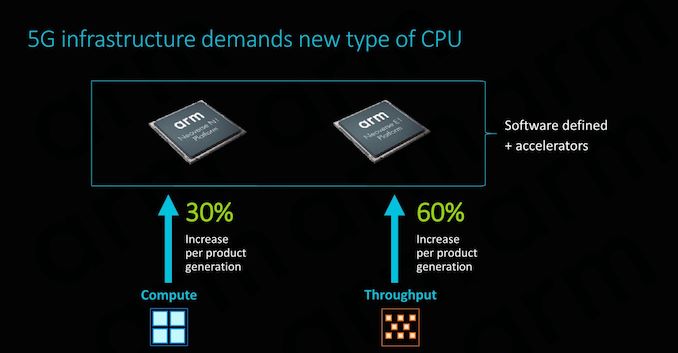
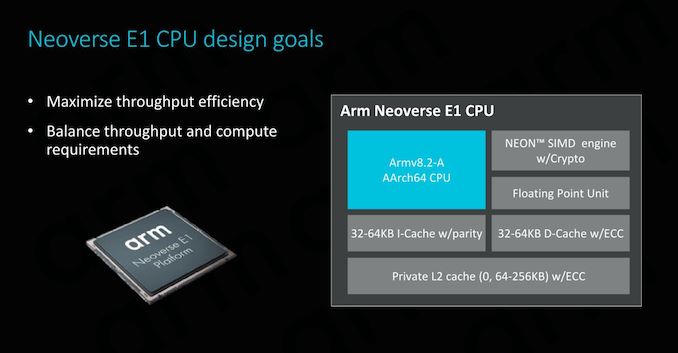
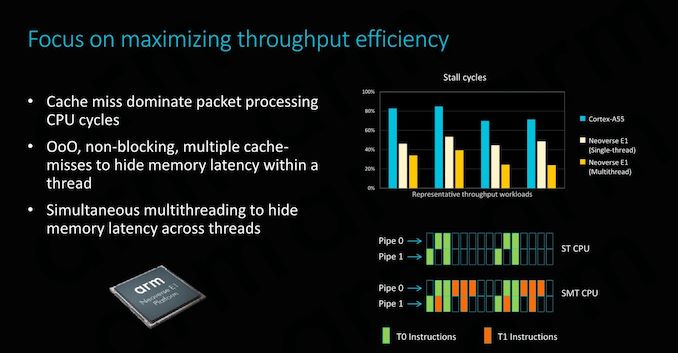
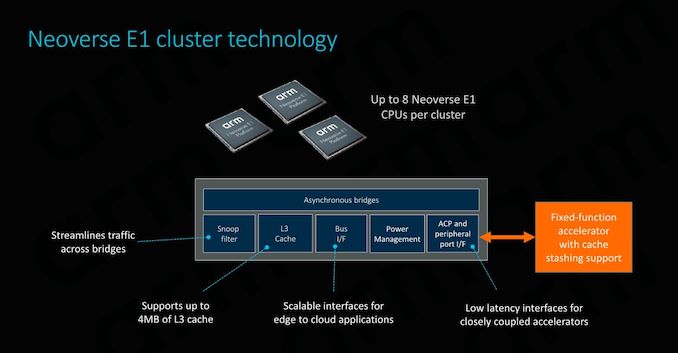
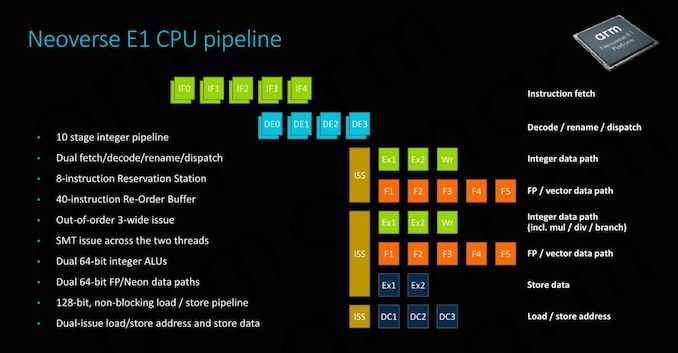
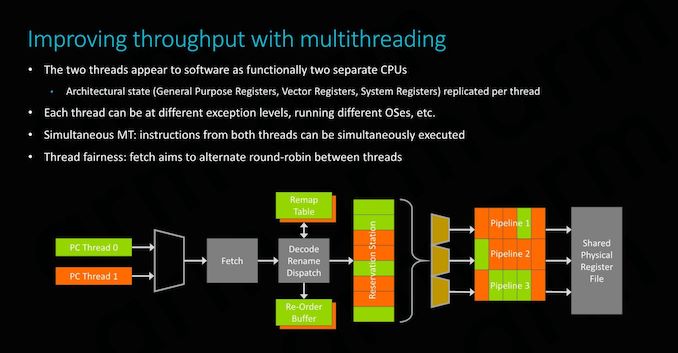
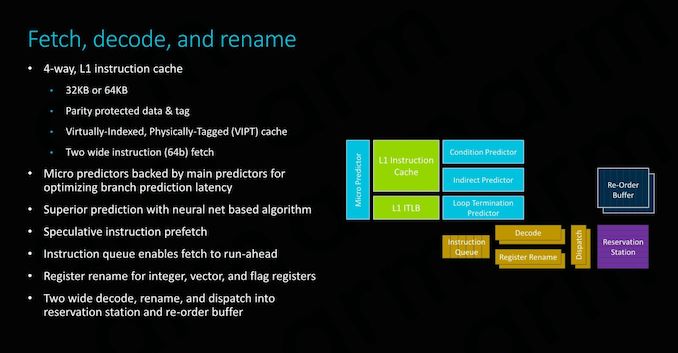
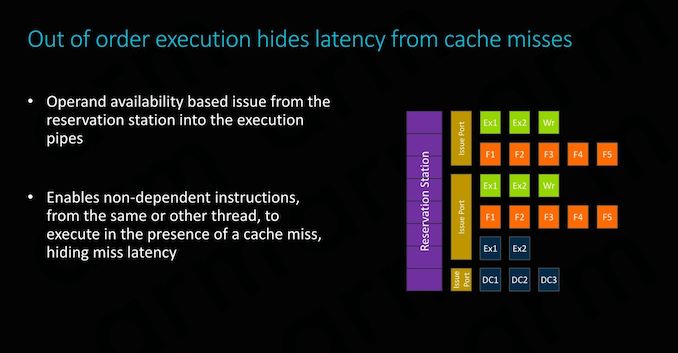

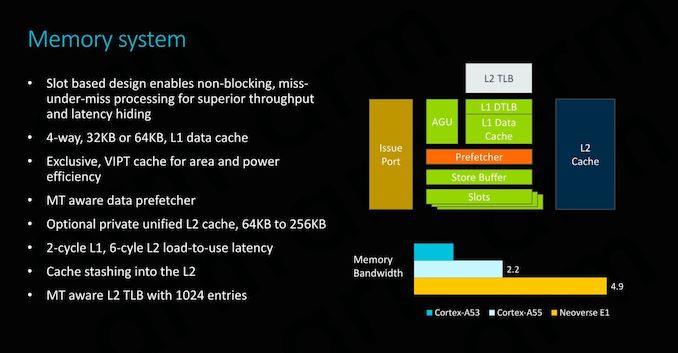








101 Comments
View All Comments
wumpus - Thursday, February 21, 2019 - link
This was supposed to be a reply to "X86 is less efficient than RISC".Neutral - Wednesday, February 20, 2019 - link
"All of these new microarchitectures are important to Arm because they represent an infliction point in the market"...Dictionary result for infliction
/inˈflikSHən/
noun
the action of inflicting something unpleasant or painful on someone or something.
Ryan Smith - Wednesday, February 20, 2019 - link
Whoops, there's one heck of a typo. Thanks!phoenix_rizzen - Thursday, February 21, 2019 - link
There's several other typos, incorrect word usage, and "correctly spelled but incorrect word" errors in this article.Excellent article with a *lot* of great information. But a lot of niggles that should have been picked up by an editor before it was published.
GreenReaper - Wednesday, February 20, 2019 - link
They're bringing *pain* to the competition! :-DAntony Newman - Wednesday, February 20, 2019 - link
Ryan : I think I counted several (6?) typos - a spellcheck will pick up most of them (there was also a DDR related one with a missing letter).AJ
eastcoast_pete - Wednesday, February 20, 2019 - link
@Andrei: Thanks! Sounds very promising, I look forward to ARM-based solutions giving Intel (and AMD) some competitive pressure in the server space, now that SPARC and Power are either down or almost out of this market. Question: Any mention of Microsoft server-type applications being ported to run native on ARM64/Neoverse? That would open a large market for Neoverse and following designs.Other comments: So, did Qualcomm get out of the server market exactly at the wrong time? Sure looks that way. Huawei played it smart, using its development and know-how from the mobile space to make itself a serious contender for ARM-based servers (China's push to have non-US solutions for their home markets doesn't hurt them, either).
The big technical questions for me are: What will the performance and energy use of the CMN-600 mesh network and CCIX be? AMD is trying its chiplet approach, but their first generation had high energy consumption and some performance degradation by the interconnect, which still has them at a disadvantage to Intel's all cores on one die approach. However, scaling up becomes prohibitive as the die gets bigger and transistor counts get higher. I see the interconnect tech as the next big thing for servers and HPC. If they (ARM) and partners can pull this off and be the first with a high-performance, energy-efficient interconnect, they can clobber Intel or AMD just by combining more and more cheap, high-performing cores using chiplets, and do so at a much lower per-core and per-performance cost.
SarahKerrigan - Wednesday, February 20, 2019 - link
Power is not even remotely out of the server market. IBM sells billions of dollars of servers per year, and the top two systems on Top500 are Power.eastcoast_pete - Wednesday, February 20, 2019 - link
Didn't say that Power is completely out of the server market; SPARC is, thanks to Larry. However, while Power is big in HPC and Supercomputing, it's become rare these days to find a Power-based unit in a server closet or rack for more general use, especially outside of large enterprises. IBM also sells quite a number of Intel-based servers, and I believe that accounts for a sizeable chunk of their remaining server business.SarahKerrigan - Wednesday, February 20, 2019 - link
That's not accurate. IBM offloaded their x86 server business (to Lenovo) in 2014. At this point, it is just z mainframes and Power.My company owns a pair of Power systems, one single-socket and one two-socket, and we're pretty small. It's not just large enterprises. OpenPower has brought down entry costs significantly.